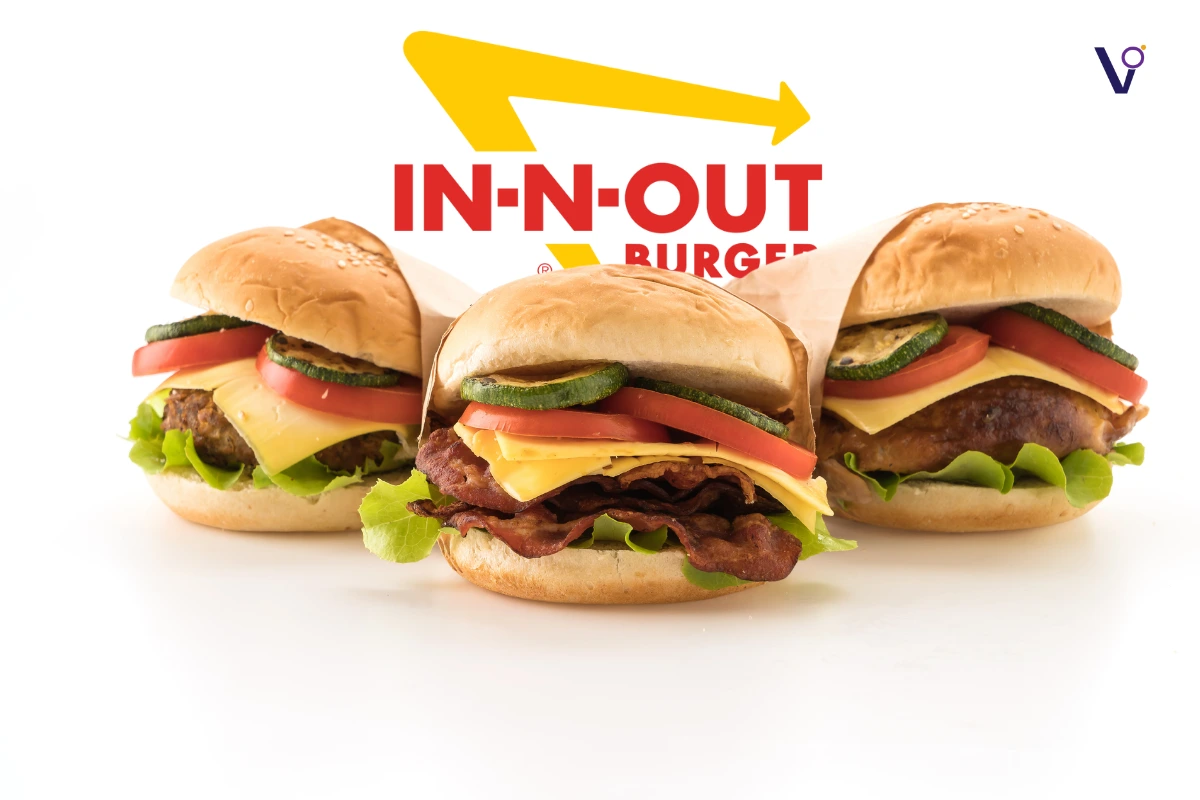When people think of California, they think of great weather, beaches — and In-N-Out marketing at its finest. Since it opened in 1948, this family-run burger stand built more than just a business. It created something people would line up for. Even today, after 75 years, you can still find crowds outside waiting for a burger from a menu that’s barely changed.
At a time when places like McDonald’s decided to stop being restaurants and started focusing on real estate, In-N-Out stuck to its lane. It chose to stay the way it was, holding onto the things that mattered: good food, good prices, and staying local.
That’s a big part of why people treat In-N-Out differently. It’s not just about grabbing a burger; it’s about the vibe. The place is always buzzing. If you see a packed In-N-Out, you want to be there too. It’s a FOMO thing. People feel like it’s the real deal, and they’re part of something.
The Power of Authentic Brand Positioning
In-N-Out didn’t need to plaster new locations everywhere like other fast food brands. With just over 400 spots, most in California, getting one of their burgers still feels like you scored something. It’s not about going big fast — it’s about being smart about where you are.
They made sure every store was only a day’s drive from their supply centers. Why? So nothing’s frozen and everything’s fresh. Burgers made to order. Fries cut in the kitchen. It matters to people. And every time a new one opens, it turns into a huge deal. Crowds line up like Santa came to town.
Why this works:
- Not being everywhere makes it feel exclusive.
- A simple, no-fuss menu people can customize.
- Fans love the small touches and secret menu hacks.
- Word of mouth carries the hype, not flashy ads.
It’s not about chasing numbers. It’s about doing what you do well and letting people come to you for it.
When a new outlet launches, the buzz rivals a concert. Lines snake around the block. Merchandise sells out. Social feeds flood with fans documenting their visit. This is pure word-of-mouth marketing at its finest — and it costs them nothing.
Pricing Strategy and Value Perception
In-N-Out’s pricing strategy is another example of smart, customer-focused marketing. Even after raising prices by 25% since 2020, the brand maintains one of the best price-to-quality ratios in the fast food market.
While competitors flood their menus with premium items to justify higher prices, In-N-Out keeps things simple. No gimmicky, overpriced menu drops. No limited-time novelties. Just a handful of classic options, made exceptionally well.
Here’s why that works:
- A smaller menu leads to smoother operations and reduced ingredient expenses.
- Lower overhead allows them to pay staff better than industry standards.
- Customers associate simplicity with quality, boosting brand trust.
- Employees deliver consistently good service, enhancing the overall experience.
This streamlined In-N-Out marketing approach improves profitability while keeping customer satisfaction high.
How Cult Brands Build Insider Communities
A defining trait of cult brands is their ability to foster insider communities, and In-N-Out excels at this.
They’ve built a menu with just a few staple items — but a well-known, not-so-secret secret menu gives loyal customers a sense of being part of an exclusive club. Items like the “Flying Dutchman” and “Animal Style” aren’t officially listed but are widely known among fans.
This clever move creates shared culture and brand language. It’s similar to how Starbucks trained customers to order a “venti” or “grande,” turning everyday transactions into status-driven rituals.
Additional community-building tactics include:
- Offering free hot chocolates for kids under 12 on rainy days.
- Avoiding mass marketing gimmicks and focusing on organic fan-driven word of mouth.
- Maintaining consistent, friendly service and above-average pay for employees, which customers recognize and appreciate.
These small, thoughtful touches build authentic connections and long-term loyalty.
Brand Protection in a Digital-First World
As delivery apps and online ordering reshape the industry, In-N-Out has deliberately resisted joining in. It famously sued DoorDash in 2015 for listing them without permission and continues to reject third-party delivery partnerships.
This refusal isn’t stubbornness. It’s a calculated move to protect customer experience and preserve product quality. When brands lose control of the customer touchpoint, quality and reputation often suffer. In-N-Out has protected both.
While expansion plans into Tennessee and beyond are underway, it will be interesting to see how they balance modern convenience with their long-standing traditions and values.
Final Thoughts: In-N-Out Marketing
In-N-Out’s success isn’t just about burgers. It’s a story of creating a brand so authentic, consistent, and emotionally charged that it became a phenomenon.
The key takeaways from In-N-Out marketing strategy:
- Focus on authenticity over novelty.
- Limit expansion to maintain exclusivity.
- Use simplicity to communicate quality.
- Build insider culture through shared brand language.
- Prioritize employee satisfaction to enhance customer experience.
- Protect brand control, even in the face of digital convenience trends.
They’ve shown that you don’t need to chase every trend or occupy every corner of the market. You just need to be remarkable at what you do and deliver it consistently.
In-N-Out focuses on brand authenticity, simplicity, consistent quality, limited expansion, and exclusivity through a secret menu — creating cult-like loyalty and marketing value through scarcity and insider culture.
A brand approach built on internal authenticity, like In-N-Out’s refusal to franchise, go public, or follow market whims, focusing instead on employee care, quality, and loyal community culture.
Through brand authenticity, a minimalist menu, secret items, consistent quality, happy employees, and community-focused experiences that turn each location visit into an exclusive, nostalgic, and word-of-mouth-worthy cultural moment.
Chick-fil-A rapidly expands like Shake Shack, while In-N-Out limits locations, focusing on quality control, authenticity, and exclusivity, creating stronger regional loyalty and a differentiated cult-like customer following.



